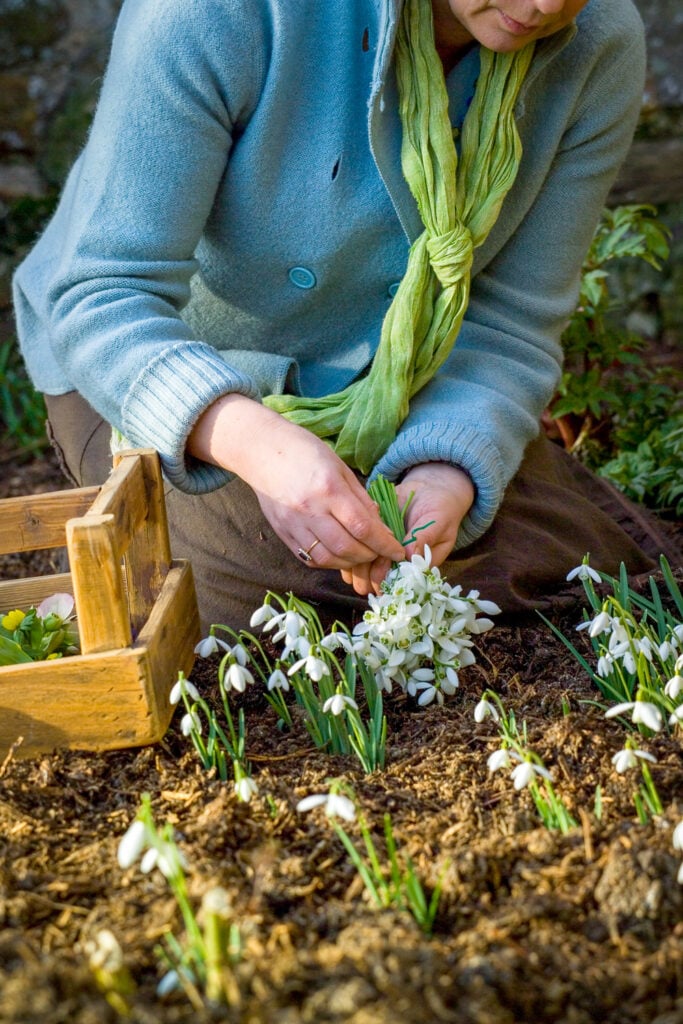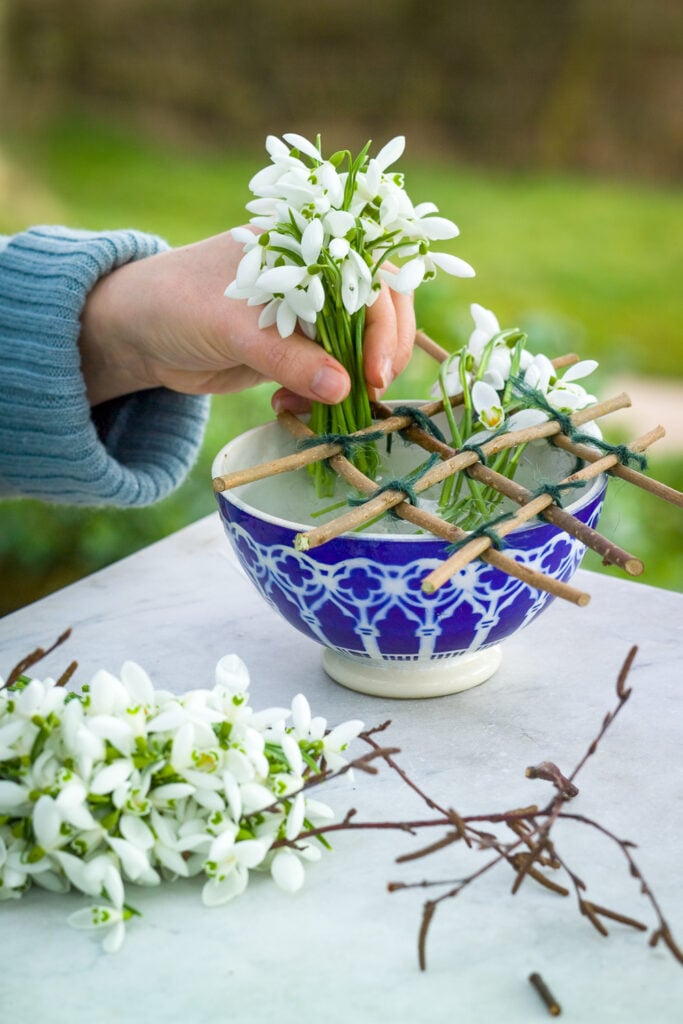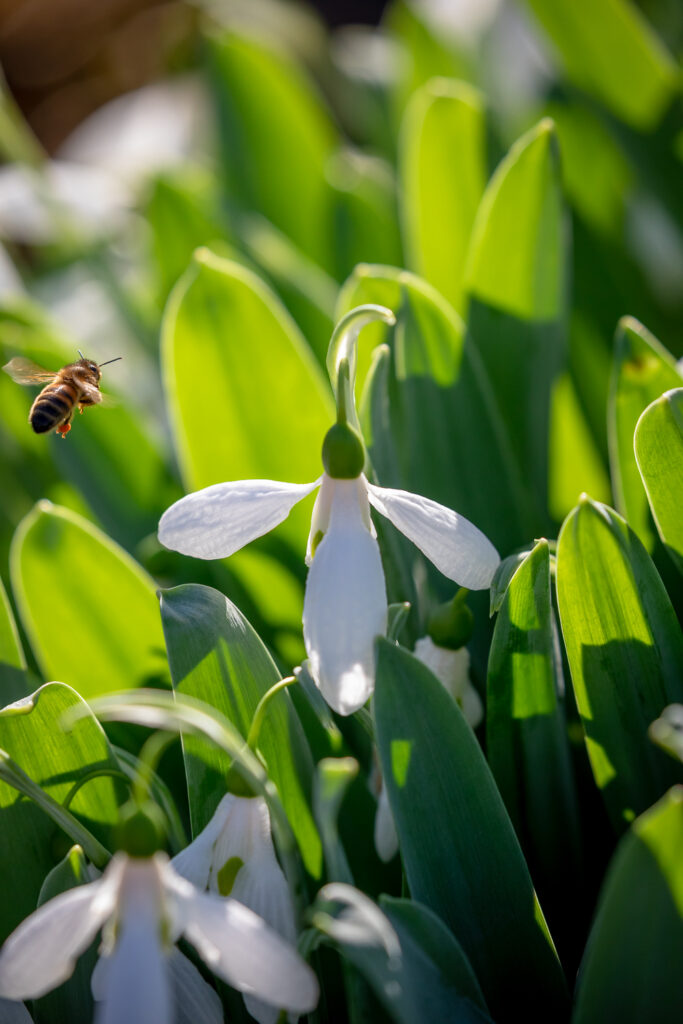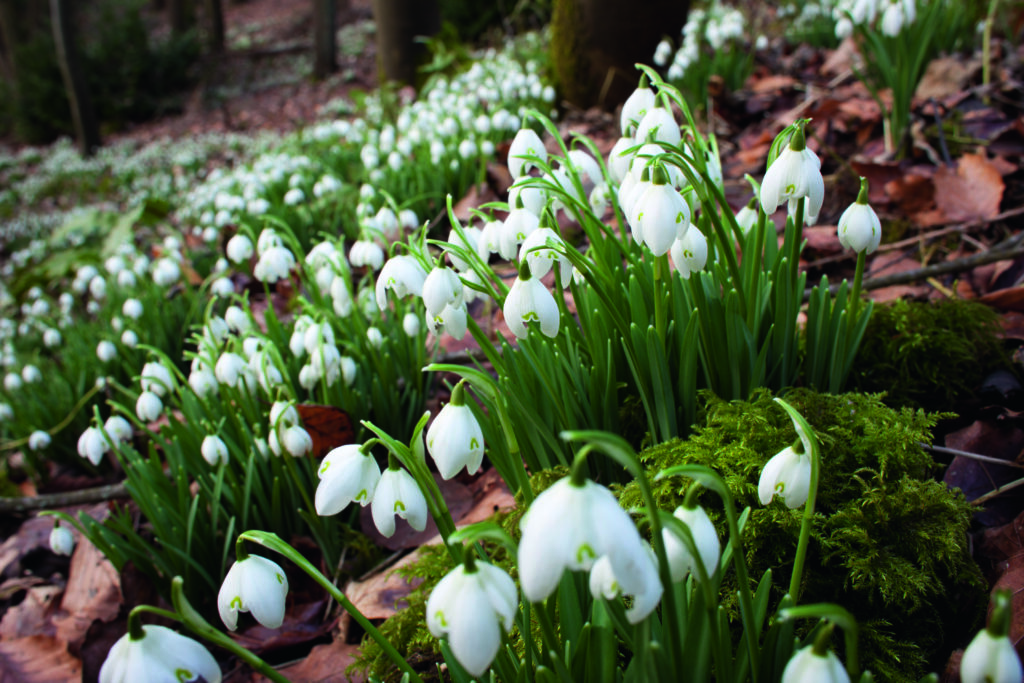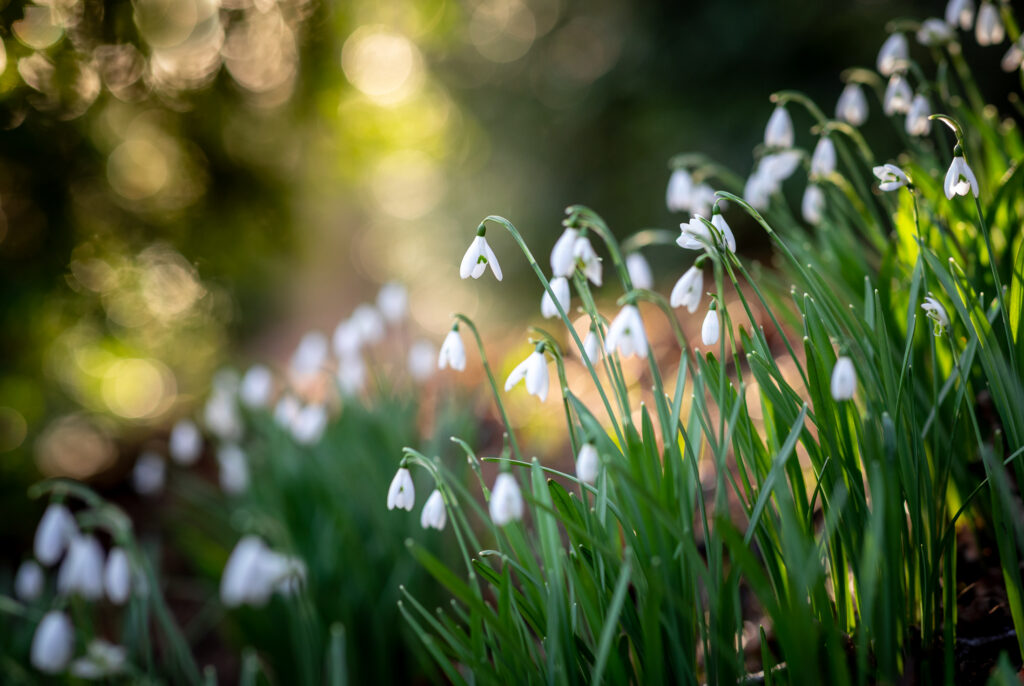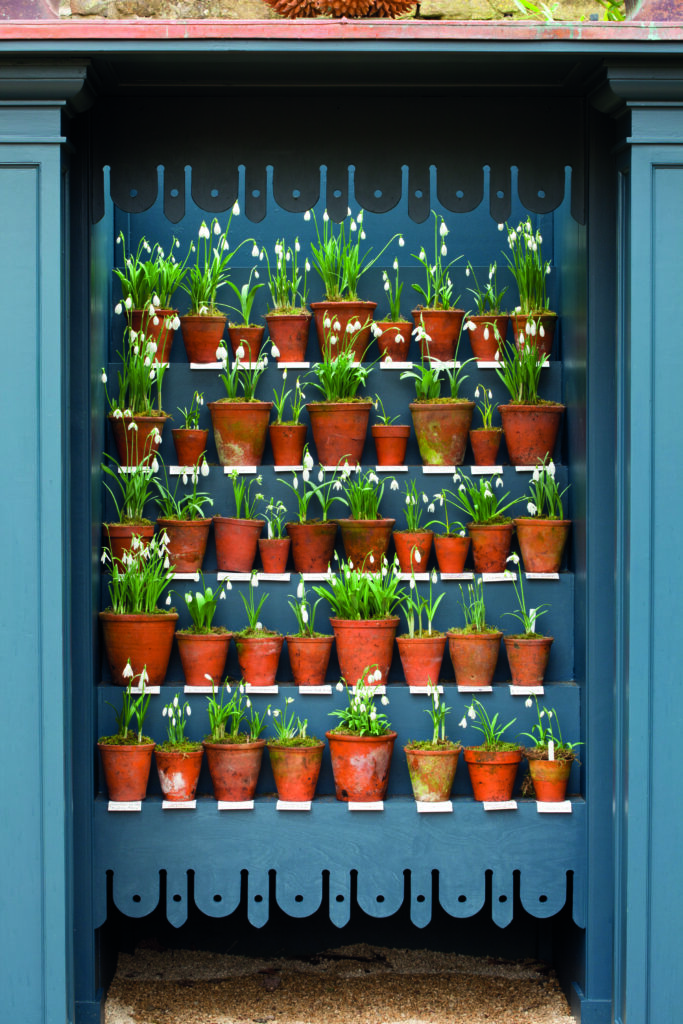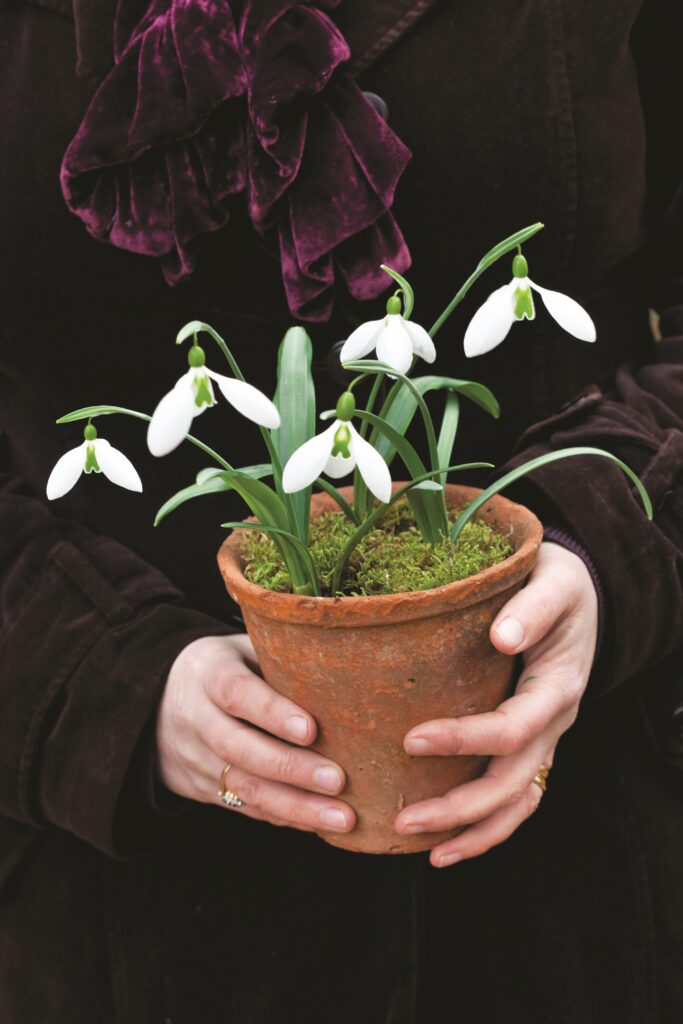Sarah Raven shares her tips for creating a wonderful display of snowdrops

All photographs © Johnathan Buckley
There is no stronger sign that winter is ending than the sight of emerging snowdrops – like small white bells peppering the borders and lawn, showing signs of life when much of the garden is dark and drab.
We asked gardening expert, Sarah Raven, for her top tips for growing them in your garden. Sarah said “For those who find the winter a difficult season to get through, snowdrops are a must in your garden. They are one of the very first things to emerge and one of the loveliest New Year vases to have at your bedside. Planting them in the green (already growing) can help them establish more quickly and reliably.”
- Sarah picking snowdrops
- Making an arrangement of snowdrops and twigs using noughts and crosses grid.
- Snowdrops provide essential pollen for the bees through the winter months
Why not try a winter flower meadow?
Flower studded grass is a great way of introducing early spring interest, and not only that, but they will naturalise, spreading year on year.
This winter staple looks gorgeous dotted in the lawn, like the winter equivalent of a summer meadow. Use as you would traditional native wildflowers, to add seasonal intrigue to your garden en masse over the colder months.
The lawn works well as a backdrop for these pretty naturalised bulbs, and you can plant different varieties in varying sizes, so they create dimension as they grow. For added impact that is easy to maintain, try planting on banks, in shady corners as ground cover, at the front of borders, in the shade of trees and shrubs, or in pots to bring the whole look together.
Some varieties are delicately scented, which means you can create drifts of fragrance that will diffuse across your outside space. If you’re looking to inject some early colour, pair with different crocus varieties for pops of vibrant purples and yellows. Like snowdrops, crocus bulbs are great for naturalising and create a truly wonderful display.
Essential food for the bravest of bees
Snowdrops offer so much more than just early interest; they also provide essential nectar and pollen for pollinators braving the harsh winter weather.
As snowdrops bloom at a time when little else is in flower, incorporating a few clusters of snowdrops into your garden can help protect and revitalise visiting bees.
Stunning varieties for creating impact
- Galanthus elwesii (Greater Snowdrop) is distinguishable from other snowdrops by slightly larger flowers which have two green spots on the inner petals, and tall, grey-green foliage.
- Galanthus nivalis (Common Snowdrop) is broadly fuss-free, so an excellent choice for getting started.
- Galanthus ‘Flore Pleno’ is the lovely double snowdrop with flowers like the underskirts of a ballerina’s tutu. It also boasts a wonderful scent.
- Double snowdrops growing amongst leaves in Kingscote Wood. Galanthus nivalis f. pleniflorus ‘Flore Pleno’
- Galanthus nivalis – Snowdrop – growing in Kingscote Wood, Gloucestershire
Bigger, better, bolder!
Snowdrops often do better when planted ‘in the green’ (already growing), in the spring, rather than in their dormant state. They settle in quickly and should start to flower from the following year. When your bulbs arrive in the spring you should plant them out as soon as possible before they dry out.
Dig a hole deep and wide enough to cover the roots and plant them at the level they were planted before they were lifted, which you’ll see from where the leaves turn white. Space snowdrops 6-8cm apart. Water in well after planting.
Growing snowdrops in a pot
Snowdrops can look really effective in a shallow half-pot on a garden table where you can appreciate their scent and delicate markings. Plant in a good rich compost mixed with leaf mould, and water whilst they are in flower. Store the pot out of the sun once the leaves have died down as the bulbs hate to dry out. Do not leave in the pot for more than two years, transplant into the garden where they can multiply happily.
- Snowdrops in terracotta pots displayed in the snowdrop theatre
- A pot of snowdrops – Galanthus ‘John Gray’
Dividing your snowdrops
After three years you can then lift and divide your snowdrops and scatter them right through your garden. Plant each bulb about 15cm (6in) from the next.
Top tip
If you’re looking for sustained flowers from late winter into spring, mix varieties to prolong the flowering period.
For a list of National Garden Scheme gardens opening with snowdrops and spring flowers this year click here





